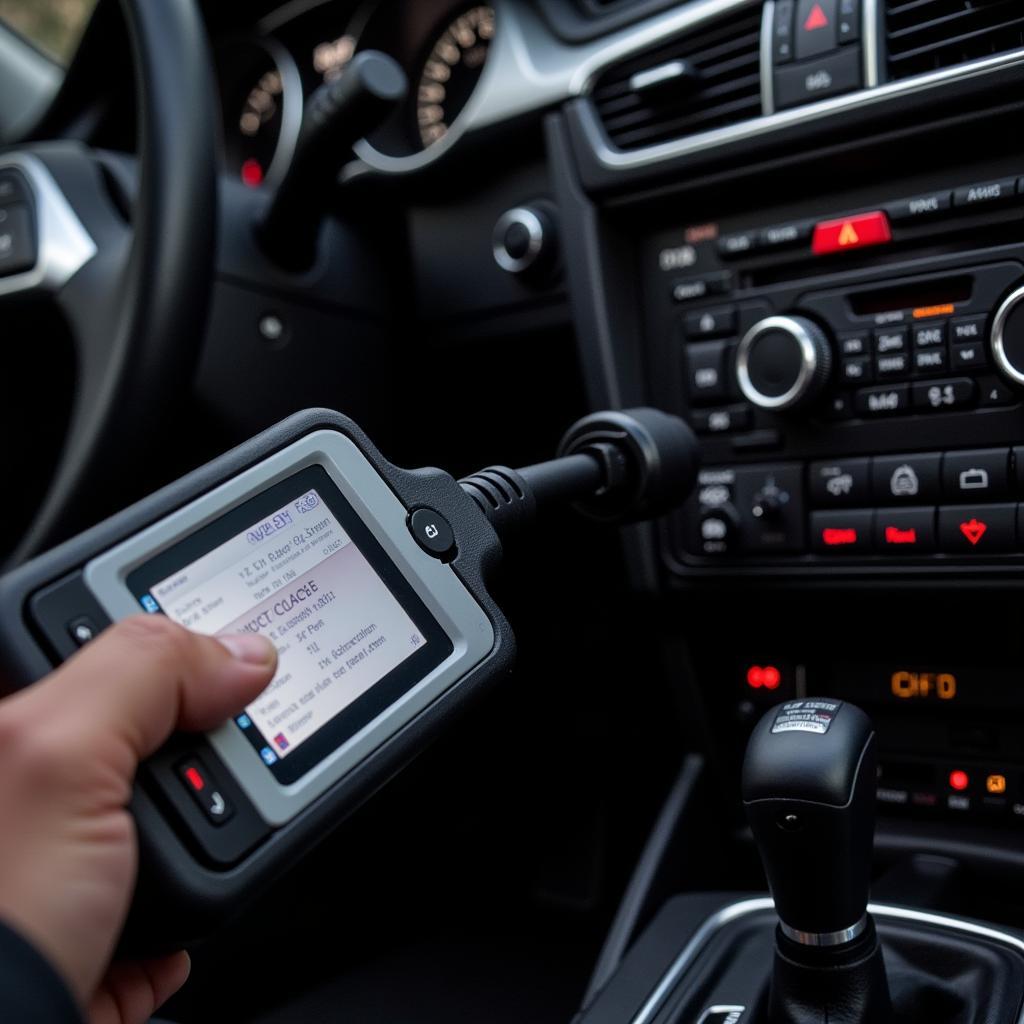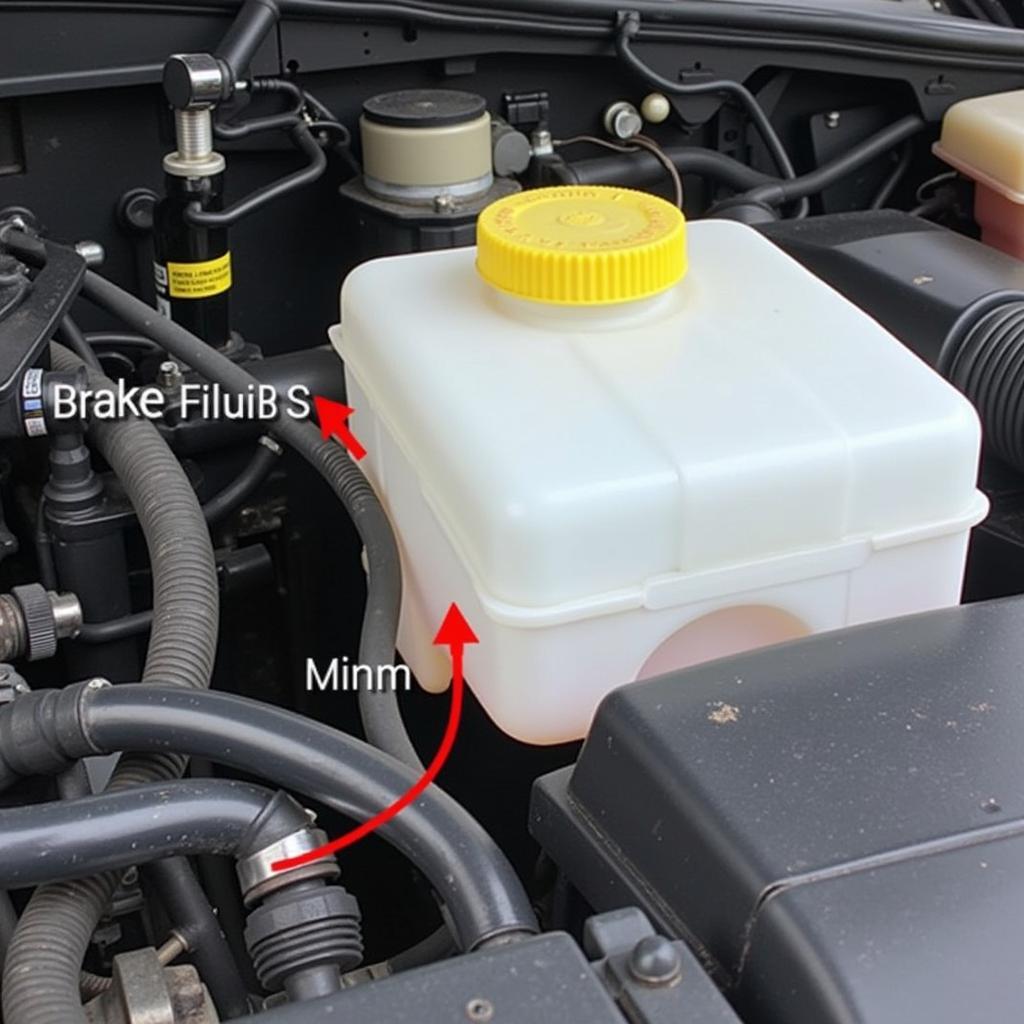The dreaded “Brake Servo Restricted” warning on your Audi dashboard can be a real heart-stopper. This message indicates a potential problem with your braking system, which is obviously a critical safety concern. This article will delve into the causes, symptoms, and solutions for an Audi displaying the “brake servo restricted” warning, offering a comprehensive guide to help you understand and address this issue.
Understanding the Brake Servo
The brake servo, also known as the brake booster, is a crucial component of your Audi’s braking system. Its primary function is to amplify the force you apply to the brake pedal, making it easier to stop the vehicle. Without a functioning brake servo, braking requires significantly more effort, making driving much more challenging and potentially dangerous.
Common Causes of “Brake Servo Restricted” Warning in Audis
The “brake servo restricted” warning can stem from a variety of issues, ranging from simple fixes to more complex problems. Here are some of the most common culprits:
- Vacuum Leaks: The brake servo relies on vacuum pressure to operate effectively. A leak in the vacuum system can reduce the available pressure, leading to the warning message. Common sources of leaks include hoses, check valves, and the vacuum pump itself.
- Faulty Brake Servo: Over time, the brake servo itself can wear out or become damaged. Internal seals can fail, or the diaphragm can rupture, compromising its ability to assist braking.
- Brake Light Switch Problems: The brake light switch plays a role in activating the brake servo. A malfunctioning switch can prevent the servo from receiving the necessary signal to engage, triggering the warning.
- Electrical Issues: Wiring problems or a faulty control module can disrupt communication between the brake servo and the car’s electronic systems, leading to the warning message.
- Low Brake Fluid: Although less common, low brake fluid can also contribute to brake servo problems. It’s crucial to maintain the correct fluid level to ensure proper braking system function.
Diagnosing the “Brake Servo Restricted” Warning
Diagnosing the root cause of this warning often requires some investigation. Here are some steps you can take:
- Check Brake Fluid Level: Ensure the brake fluid reservoir is full. Low fluid can indicate leaks or other issues within the braking system.
- Inspect Vacuum Hoses: Carefully examine all vacuum hoses connected to the brake servo for cracks, splits, or loose connections. A hissing sound may indicate a leak.
- Test the Brake Light Switch: Check if the brake lights illuminate when the brake pedal is pressed. If not, the brake light switch might be faulty.
- Scan for Diagnostic Trouble Codes (DTCs): Using a diagnostic scanner can reveal specific error codes related to the brake servo, providing valuable clues for troubleshooting.
 Audi Diagnostic Scan Tool
Audi Diagnostic Scan Tool
Solutions and Repairs
Depending on the diagnosed problem, the solution may involve:
- Replacing Vacuum Hoses: If a vacuum leak is detected, replacing the affected hoses is a relatively simple and inexpensive fix.
- Repairing or Replacing the Brake Servo: A faulty brake servo will likely need to be repaired or replaced. This is a more involved repair that may require professional assistance.
- Replacing the Brake Light Switch: A faulty brake light switch is a straightforward replacement.
- Addressing Electrical Issues: Resolving electrical problems may involve repairing wiring, replacing connectors, or even addressing control module issues. This may require the expertise of a qualified auto electrician.
- Bleeding the Brake System: If low brake fluid was the issue, topping off the fluid and bleeding the system is necessary to remove any air bubbles.
Remote Diagnostics, Programming, and Software Installation
In some cases, remote diagnostics, programming, and software updates can be utilized to address certain brake servo related issues. This innovative approach allows specialized technicians to access your vehicle’s systems remotely and perform necessary software updates or adjustments, potentially resolving the problem without a physical visit to a repair shop.
Conclusion
The “Audi warning brake servo restricted” message should never be ignored. It signals a potential problem with your braking system, which requires immediate attention. By understanding the causes, symptoms, and potential solutions, you can take the necessary steps to ensure your Audi’s braking system is functioning safely and efficiently. Addressing this issue promptly can prevent further damage and ensure your safety on the road.
FAQ
- Can I still drive my Audi with the “brake servo restricted” warning? While technically possible, it’s strongly discouraged. Braking will require significantly more effort, making it dangerous, especially in emergency situations.
- How much does it cost to fix a brake servo problem? The cost varies depending on the specific issue and the labor rates in your area. A simple hose replacement might be relatively inexpensive, while a brake servo replacement can be more costly.
- How can I prevent brake servo problems? Regular maintenance, including brake fluid checks and inspections of vacuum hoses, can help prevent brake servo issues.
- Is the brake servo covered under warranty? It depends on the terms of your specific warranty. Some warranties may cover brake servo issues, while others may not.
- What should I do if the warning light reappears after repairs? Return to the mechanic immediately. The initial problem may not have been fully resolved, or a new issue may have developed.
- Can I diagnose the problem myself? While you can perform some basic checks, a proper diagnosis often requires specialized tools and expertise.
- Can remote diagnostics solve all brake servo problems? No, remote diagnostics are primarily useful for software-related issues. Mechanical problems often require physical repairs.

